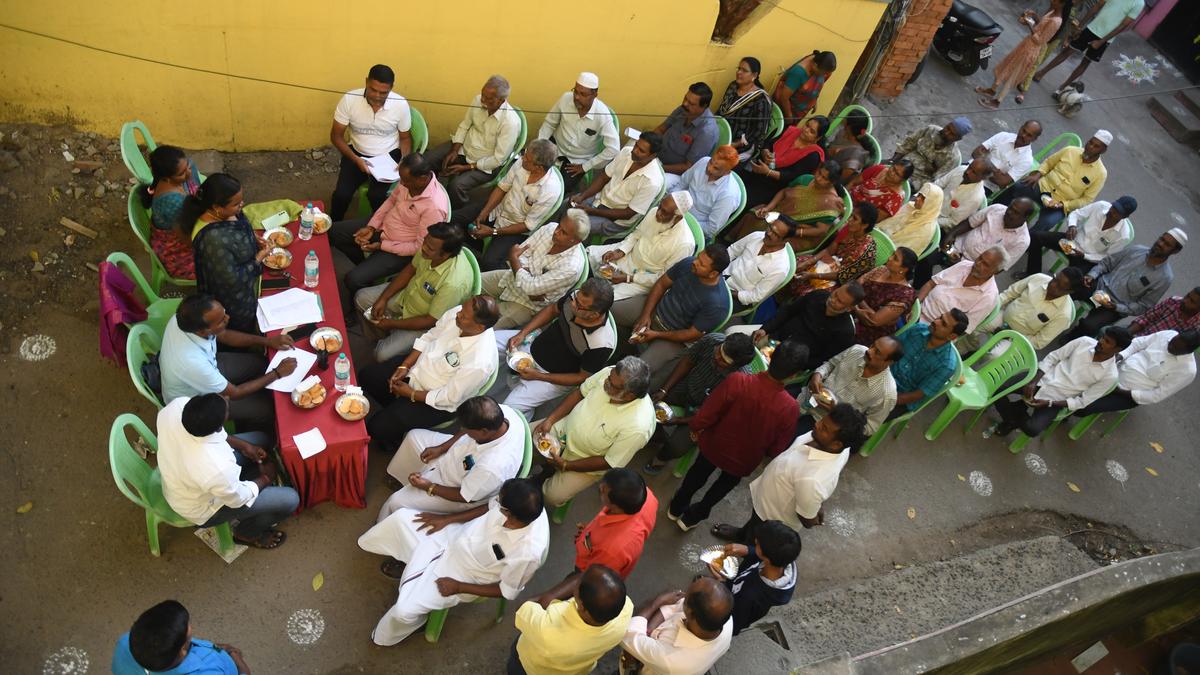Area Sabha meeting at Ward 183 in Palavakkam, Chennai
As my study on Participatory Governance progressed, one thing became increasingly evident that participation cannot thrive in isolation. It needs structure, support, and a systemic foundation. In our effort to understand what makes participation truly effective, the first category that emerged in our framework was the Ecosystem that enables Participation. This assesses the legal, institutional, and collaborative conditions that make participation possible.
Effective participation begins with a clear legal mandate. This includes laws and subsequent amendments that provide for the creation of platforms like Ward Committees, Area Sabhas, or Neighbourhood Groups. These legal provisions must go beyond token mentions; they should define the platform’s composition, functions, powers, and meeting norms. Provisions that ensure the representation of women and marginalised groups are especially important.
Kerala offers a clear example of what this looks like in practice. The Kerala Municipality Act, 1994 not only mandates Ward Committees but also lays out details on representation, quorum, meeting processes, and responsibilities. What stands out is the proximity built into the system: unlike the 74th Constitutional Amendment, which mandates Ward Committees only for populations above 3 lakhs, Kerala allows for Ward Committees in municipalities with populations over 1 lakh. The constitution of Ward Sabhas in smaller municipalities furthers decentralisation in practice, not just in principle.
But having a law is not enough; it must be implemented. The second parameter within the enabling ecosystem is institutionalisation and implementation, which focuses on the formation and functioning of the platforms. This asks: Have participatory platforms been formally constituted? Are they active? Do they have a representative composition, such as elected leaders, citizens, women, youth, the elderly, unions, and self-help groups? It further assesses the conduct and quality of meetings: Are meetings structured and regular? Is there support infrastructure in place, such as meeting spaces, agenda-setting processes, and documentation?
Bhuj city, in Gujarat, shows what this can look like even in the absence of a formal legal mandate. Under the Homes in the City (HIC) programme (a collective of five civil society organisations), Ward Committees have been constituted and are functioning across almost all wards. These committees meet regularly, follow defined processes, and ensure diverse representation from across the community, including a strong presence of women, thanks to the city’s long-standing network of self-help groups. Meetings are not just symbolic; they are recorded, agendas are followed, and outcomes are monitored.
In Tamil Nadu, institutionalisation took a formal turn in 2022 with the notification of the Tamil Nadu Urban Local Bodies (Ward Committee and Area Sabha) Rules. The rules stipulate that Area Sabha and Ward Committee shall be formed across urban local governments in Tamil Nadu, and meetings must be held quarterly to facilitate participatory governance. It has earmarked four days, January 25, April 14, September 15 and December 10 every year, to conduct the meetings. While it’s still too early to assess long-term outcomes, this move marks an important step toward systematising participation across the state.
What these examples show is that laws alone do not guarantee participation. It is their translation into operational platforms, regular practices, and representative forums that creates real opportunities for citizen voice. Without institutionalisation, legal provisions remain abstract. Without legal grounding, institutions remain unstable.
Together, legal grounding and institutionalisation create the scaffolding within which participation can take root. They provide three things every participatory platform needs: clarity, continuity, and credibility.
But this isn’t the whole story. One critical component of the enabling ecosystem remains: the relationships that sustain participation in everyday governance. In the next blog, I’ll explore this third pillar; the collaborative ties between governments, communities, and civil society that keep participation alive.


